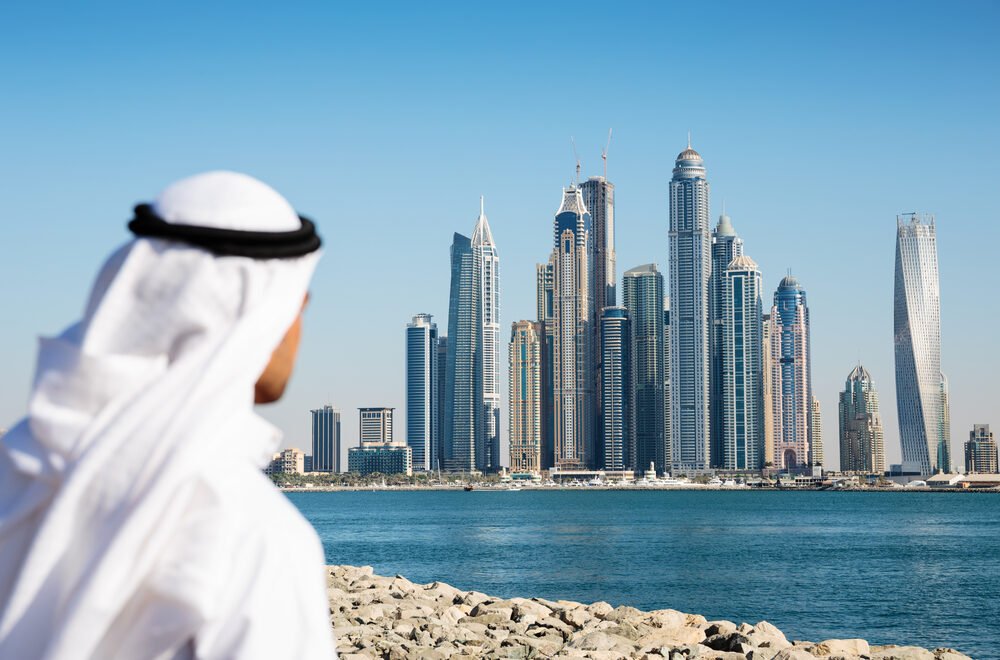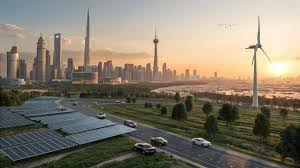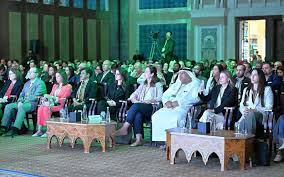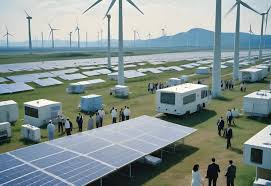Now Reading: UAE’s Bold Plan to Cut Carbon Emissions by 2050 Unveiled
-
01
UAE’s Bold Plan to Cut Carbon Emissions by 2050 Unveiled
UAE’s Bold Plan to Cut Carbon Emissions by 2050 Unveiled

Table of Contents
The United Arab Emirates (UAE) is taking serious action to reduce carbon emissions and create a greener, more sustainable future. As the country’s economy grows, so does its responsibility to fight climate change. Over the past few years, the UAE has announced and implemented several policies and projects designed to cut greenhouse gas emissions while ensuring energy security, economic growth, and public health.
A Net-Zero Goal by 2050

One of the biggest steps the UAE has taken is its pledge to achieve Net-Zero carbon emissions by the year 2050. This means the country plans to reduce greenhouse gas emissions as much as possible and offset the rest by investing in clean energy and other sustainable solutions.
The UAE became the first country in the Middle East and North Africa (MENA) region to make such a commitment. The Net-Zero 2050 initiative is seen as a bold and historic move that will change how energy, transportation, and industry work in the UAE over the next few decades.
His Highness Sheikh Mohammed bin Rashid Al Maktoum, Vice President and Prime Minister of the UAE, has emphasized that economic development and environmental protection can go hand in hand. “We aim to balance economic growth and environmental sustainability, ensuring a future where our people enjoy prosperity and wellbeing,” he said.
Massive Investments in Renewable Energy

Reducing carbon emissions requires changing the way energy is produced and used. The UAE is already a leader in renewable energy in the Gulf region. The country has invested billions of dollars in solar and nuclear power, which are clean alternatives to oil and gas.
For example, the Mohammed bin Rashid Al Maktoum Solar Park in Dubai is one of the largest solar energy projects in the world. It is expected to produce 5,000 megawatts of clean electricity by 2030, enough to power hundreds of thousands of homes. This project alone will reduce carbon emissions by millions of tons every year.
In addition, the Barakah Nuclear Energy Plant in Abu Dhabi began operations in 2020. When fully operational, it will provide 25% of the UAE’s electricity needs without producing any carbon emissions.
These projects are part of the UAE’s wider energy strategy to have 50% of its power come from clean energy sources by 2050, cutting down on fossil fuel dependence.
Sustainable Transportation Policies

Transportation is one of the largest sources of carbon emissions worldwide, and the UAE is acting fast to make this sector cleaner.
The government is pushing for the use of electric and hydrogen vehicles. Dubai and Abu Dhabi have already started installing electric car charging stations across the cities. The UAE also aims to have 42,000 electric vehicles on its roads by 2030.
Public transport is also being made more sustainable. The Dubai Metro, which runs on electricity, has already reduced the number of cars on the road. There are also plans for green buses, smart transportation systems, and improved cycling and pedestrian paths to reduce the carbon footprint.
Green Building Codes and Eco-Friendly Cities
Another key focus area is construction. Buildings account for a big share of carbon emissions because of the energy they use. The UAE’s Estidama Pearl Rating System requires new buildings to meet eco-friendly standards, such as better insulation and energy-saving designs.
Masdar City in Abu Dhabi is an example of a future-ready, sustainable urban area. The city was designed to use 40% less energy and water than conventional cities. It features solar panels, electric transportation, and wind towers that cool buildings naturally without electricity.
These green building policies are expected to lower the carbon emissions from housing, offices, and shopping centers across the country.
Circular Economy and Waste Management Efforts
Waste management is another important part of the UAE’s carbon reduction plan. When waste breaks down in landfills, it produces methane — a gas far more harmful than carbon dioxide.
To solve this, the UAE is promoting recycling and a circular economy where materials are reused instead of thrown away. The country has set a target to divert 75% of its waste away from landfills by 2025.
In addition, several waste-to-energy plants are being built. These facilities will burn waste to generate electricity, reducing the need for landfills and cutting emissions.
Carbon Capture and Storage (CCS) Technology
The UAE is also investing in Carbon Capture and Storage (CCS) technology, which captures carbon dioxide from industrial plants and stores it underground so it cannot enter the atmosphere.
One of the world’s first commercial CCS projects is already operating in Abu Dhabi, where carbon emissions from steel factories are being captured and reused to enhance oil recovery.
Experts believe CCS technology can play an important role in reducing emissions from industries that are difficult to make fully clean, such as cement and steel production.
Public Awareness and Private Sector Involvement
The UAE government knows that reducing carbon emissions is not just a government job — businesses and the public must also be involved. Campaigns are being launched to teach residents about energy saving, recycling, and eco-friendly lifestyles.
Private companies are being encouraged to invest in green projects through incentives, partnerships, and green financing options like green bonds.
For example, Emirates Airline is testing eco-friendly fuels to reduce emissions from aviation, while companies like Majid Al Futtaim have pledged to become Net-Zero businesses by 2040.
Challenges Ahead
Despite all these efforts, the UAE still faces challenges in meeting its carbon goals. The country is one of the top oil producers in the world, and shifting away from fossil fuels will require careful planning to protect jobs and economic stability.
Experts also say that new technologies, such as green hydrogen and energy storage, must become cheaper and more widely used for the UAE to achieve its targets.
However, with its strong government vision, massive investments, and international partnerships, the UAE is on the right path to building a low-carbon future.
Conclusion: A Model for the Region and the World
The UAE’s bold actions to reduce carbon emissions are setting an example not only for the Gulf but for the world. By investing in clean energy, sustainable cities, green transport, and carbon capture, the UAE is proving that economic growth and environmental protection can happen together.
As 2050 approaches, all eyes will be on the UAE to see how this ambitious vision turns into a reality — shaping the future of climate action in the Middle East and beyond.
Read More:- Shobha Realty Launches Its Most Luxurious Project Yet—Full Details Inside 2025






















